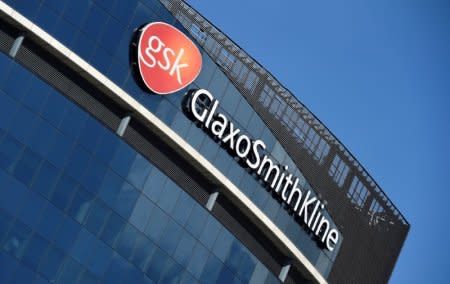GlaxoSmithKline prescribes commercial reboot for pharma division

Thomson Reuters
By Ben Hirschler
LONDON (Reuters) - In January, GlaxoSmithKline's new head of pharmaceuticals Luke Miels issued a blunt challenge to his managers: find budget savings of 20 percent.
The plan was to pool the savings and reallocate the money to priority medicines and markets for Britain's biggest drugmaker, according to people familiar with the meeting.
The tough demand startled some GSK veterans who are used to a more consultative approach, said the sources. But it is a sign of the harder commercial edge new Chief Executive Emma Walmsley - almost 12 months into the job - is bringing to a company whose shares have moved sideways for years.
Miels - a long-time protege of AstraZeneca CEO Pascal Soriot, whose departure sparked a legal spat between the rival drugmakers - is a key lieutenant for Walmsley as she tries to overhaul the core pharma business.
The unit has lagged rivals like Novartis and Merck & Co in producing multibillion-dollar blockbusters, so Walmsley has prioritized plans to refocus both its research and marketing efforts in a drive for fewer but bigger new drugs.
Miels declined to comment in detail on his budget demand, including the savings figure of 20 percent, but confirmed the strategic goal of achieving a leaner, meaner commercial footprint to match a recently pared-down research and development (R&D) operation.
The aim is to concentrate sales and marketing resources on new products, particularly lung drug Trelegy and shingles vaccine Shingrix, in 10 big markets - ranging from the United States, major European countries and Japan to China, India and Russia, he told Reuters.
"In R&D, we're trying to pick which assets are most productive and are going to add the most value to patients. Well, we need to do the same thing in the commercial organization," Miels said.
"That is something that will become more visible over time and it is a process that we are going through now ... the strategy is more advanced than is visible externally."
One early casualty is the reversal of previous expansion in Africa.
GSK's track record for bringing new drugs to market has actually been in the middle of its peer group since 2011, according to a recent Berenberg bank analysis, but its commercial performance has disappointed.
UPHILL TASK AHEAD
Miels and his colleague Hal Barron - a long-time Roche scientist who joined in January as R&D head - know they have their work cut.
Even with a renewed sense of urgency, GSK's new drug pipeline will not deliver its next batch of products before 2020 and, in the meantime, big challenges loom in two pivotal established disease areas.
A new drug from Gilead Sciences is set to dent GSK's HIV business, while U.S. generic competition to aging lung drug Advair is coming.
Adding to uncertainty is the possibility that Walmsley - a consumer products veteran who worked for 17 years at L'Oreal - might buy Pfizer's over-the-counter business for up to $20 billion. A deal may boost earnings but could prove a financial stretch.
GSK shares have underperformed the European healthcare sector by 16 percent since she took over on April 1, 2017, which has not been lost on skeptics like high-profile fund manager Neil Woodford, who sold out of GSK in May.
REBUILDING CANCER
Walmsley announced plans last July to streamline pharma R&D by ditching more than 30 drug projects.
Still, Miels said he had the resources needed to build up the business in new focus areas like oncology and immunology, including potential funding for add-on biotech deals.
Significant cash is already being put to work, especially in the company's cancer research labs.
Three years ago, GSK sold its established cancer medicines to Novartis. But it retained some early-stage projects that it now believes have the potential to leapfrog rivals and be at the forefront of treatment.
They include an antibody drug for multiple myeloma, which could be launched in 2020, as well as new kinds of immunotherapy and cell therapies designed to modify patients' immune cells.
In cell therapy alone, GSK has spent "hundreds of millions of dollars" to build a large presence focused on T-cell receptors (TCRs), according to oncology R&D head Axel Hoos.
Its presence may be largely below the radar but GSK's commitment is on a par with better-known cell therapy companies like Novartis, Gilead and Celgene , Hoos said in an interview.
Unlike CAR-T cells that recognize proteins on the cell surface, TCRs can find tumor-specific proteins on the inside of cells and, significantly, they appear to be able to fight solid tumors, rather than just the blood cancers hit by CAR-T treatments like Novartis' Kymriah and Gilead's Yescarta.
Just last week, GSK's partner Adaptimmune reported a second solid tumor response to TCR therapy.
The research is early and the cancer field is highly competitive but successful oncology drugs can deliver quickly, as rival AstraZeneca is starting to demonstrate. Consensus forecasts point to its 2018-22 annual earnings growth averaging 15.3 percent compared with just 5.3 percent for GSK.
(GRAPHIC: GSK comparative total return - http://reut.rs/2FXTmEt)
(Reporting by Ben Hirschler; Editing by Pravin Char)
See Also:

 Yahoo News
Yahoo News 
